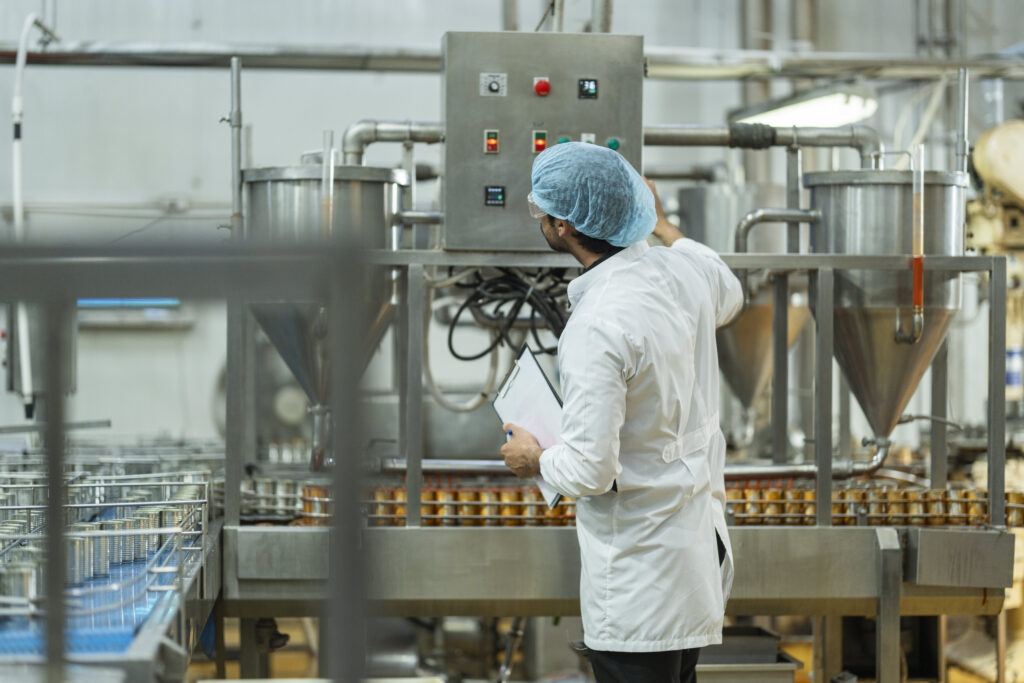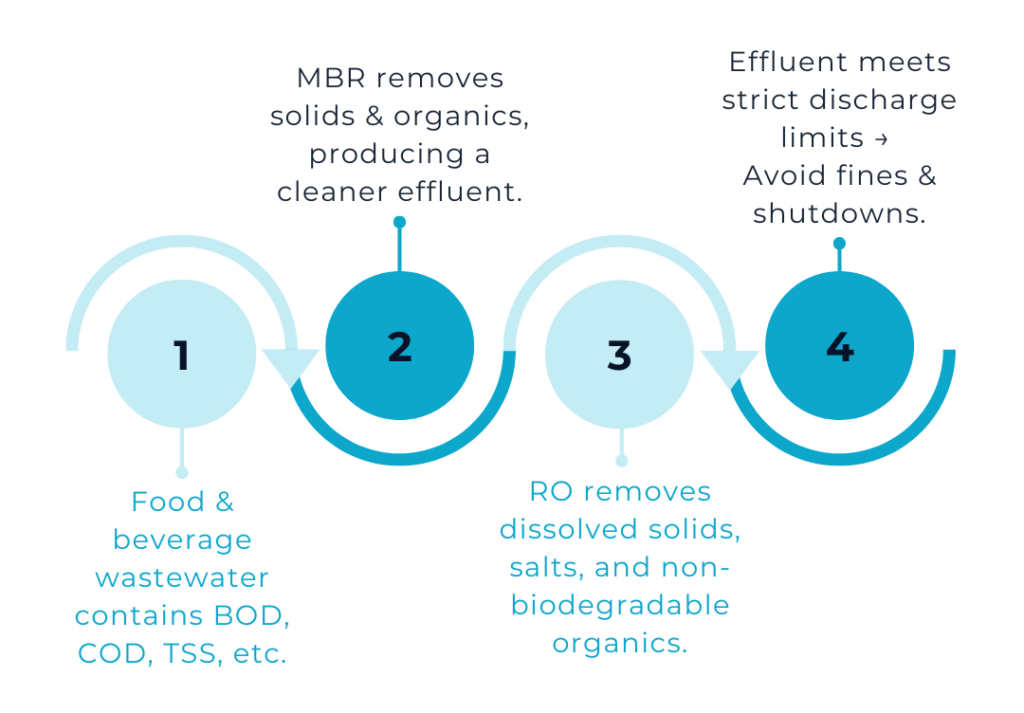The food and beverage industry faces increasingly stringent regulations around wastewater disposal. In particular, plants must meet strict limits on key parameters such as biochemical oxygen demand (BOD), chemical oxygen demand (COD), total suspended solids (TSS), amongst other contaminants. Failing to meet these limits can lead to fines, operational shutdowns, and reputational risk.

Integrating membrane bioreactor (MBR) technology with advanced reverse osmosis (RO) membranes presents a reliable, multi-stage treatment approach to effectively remove these pollutants and ensure regulatory compliance.
Understanding MBRs and RO
Membrane Bioreactor (MBR) Basics
An MBR integrates biological wastewater treatment with membrane filtration in a single, compact design. Suspended-growth microbes break down organic pollutants, while specialized membranes retain suspended solids, bacteria, and other contaminants. The result is an effluent that is considerably cleaner than that from a conventional activated sludge system.
Reverse Osmosis (RO) Basics
RO is a pressure-driven process that pushes water through a semi-permeable membrane, removing dissolved solids, salts, non-biodegradable organics, and other fine particulates. The permeate (or treated water) emerges with extremely low levels of contaminants—often suitable for reuse and near-potable applications.
Benefits of Combining MBR + RO for Discharge Compliance
 Stringent Contaminant Removal
Stringent Contaminant Removal
MBRs effectively reduce BOD, TSS, and other macro-pollutants. When followed by RO, the resulting water is polished to remove dissolved salts and other molecules common in food and beverage wastewater streams. This multi-step approach yields an effluent that meets or surpasses strict discharge standards.
Reduced Footprint
Both MBR and RO systems can be designed to fit within a relatively compact footprint. This is particularly advantageous for food and beverage plants where space is often limited. By integrating these processes, facilities can reduce tankage requirements and minimize the overall footprint compared to traditional systems.
Lower Operational Costs (When Optimized)
While both MBR and RO systems do require energy inputs, thoughtful system design and operational strategies can significantly lower long-term costs. A high-quality MBR effluent can lessen the fouling potential on the RO membranes, reducing cleaning frequency and prolonging membrane life, though often residual organic content is present which can impact RO operations. To prevent this, an advanced RO membrane can be used to better resist this fouling, extending membrane lifespan and lower operating pressure and energy requirements.
Waste Minimization
MBRs are known for producing less sludge than conventional biological processes. This directly reduces disposal costs. The RO stage further concentrates dissolved pollutants, which can be managed more efficiently than large volumes of liquid waste.
Overcoming Integration Challenges
Operational Complexities
Combining two membrane processes requires close attention to flow rates, transmembrane pressures, and cleaning protocols. Each system must be optimized to work together, ensuring maximum efficiency and minimal downtime.
Membrane Fouling
Waste streams in the food and beverage sector are rich in sugars, proteins, and fats that can quickly lead to biofouling and scaling on conventional membranes. While careful pretreatment and thorough cleaning protocols remain essential, leveraging advanced membrane technology can significantly ease these challenges, helping to maintain more stable performance over time.
Cost & Maintenance
While the initial capital expenditure for MBR+RO can be higher than conventional systems, it offers higher quality effluent capable of consistently meeting discharge or reuse requirements. Additionally, choosing a durable, fouling-resistant membrane technology can significantly reduce total cost of ownership (TCO) by elongating membrane lifespan, resisting performance decline from fouling, and maintaining chemical and mechanical stability that sustains high flux and rejection over time.
How ZwitterCo Membranes Are Different
Innovative Chemistry
ZwitterCo membranes harnesses a breakthrough zwitterionic membrane technology that features a dual-charged, hydrophilic surface, effectively repelling proteins, oils, and other organic compounds prevalent in food and beverage waste. This technology minimizes foulant adhesion on the membrane surface, maintaining consistently high flux rates and operational stability over time.
Operational Advantages
ZwitterCo membranes often require fewer cleaning cycles due to their fouling resistance, reducing system downtime and maintenance costs. They also handle variability in feed composition—a frequent challenge in food and beverage processing—more efficiently than conventional membranes.
ROI Considerations
With a longer membrane lifespan and less frequent cleaning, ZwitterCo’s solutions can lead to compelling long-term savings. When faced with tighter discharge limits, these investments can also help avoid non-compliance fees and production slowdowns.
The growing demand for cleaner effluent and the need to comply with stricter discharge limits make MBR+RO integration a powerful solution for the food and beverage industry. By leveraging ZwitterCo’s cutting-edge membranes, facilities can begin to overcome common fouling challenges and optimize operations, ultimately ensuring reliable compliance while controlling costs.
Interested in learning more? Reach out to ZwitterCo’s team for a customized assessment of your wastewater treatment needs and discover how our membrane solutions can help your facility meet and exceed discharge requirements.


